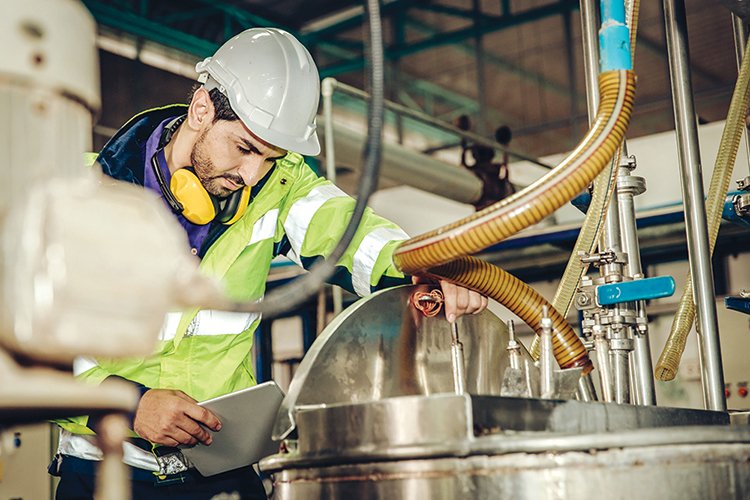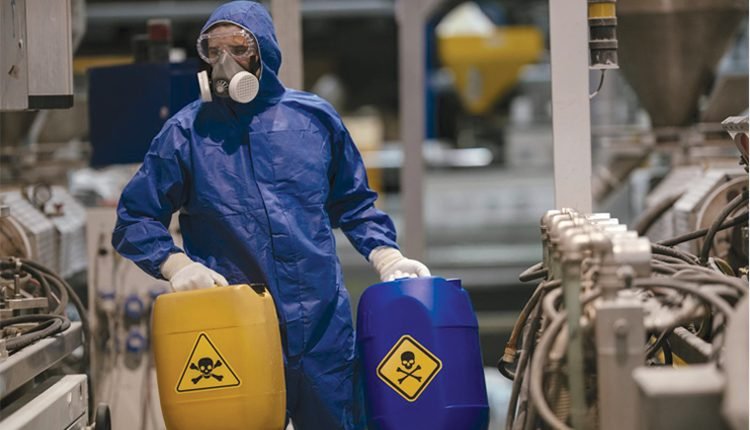Chemical plants are essential to modern industry, producing everything from fertilizers and plastics to pharmaceuticals and fuels. However, the complex processes involved pose substantial risks to life, property, and the environment. Hazard prevention in chemical plants is paramount and requires a multi-layered approach encompassing safety protocols, technological innovation, proper training, and emergency response planning. This article outlines effective strategies to safeguard life and property against potential hazards in chemical plants.
Comprehensive Risk Assessment
Before implementing any protective measures, a thorough risk assessment is essential. A risk assessment identifies potential hazards and assesses their likelihood and potential impact. Common risks in chemical plants include fires, explosions, toxic releases, and equipment malfunctions. The risk assessment process should involve:
- Identifying Hazardous Substances: Catalog all chemicals and substances in the plant, noting their flammability, toxicity, reactivity, and compatibility with other chemicals.
- Assessing Process Risks: Evaluate each stage of the manufacturing process to identify points where failures could lead to hazardous conditions.
- Implementing Safety Controls: Apply preventive measures, such as controlling ignition sources, using explosion-proof equipment, and storing reactive chemicals separately.
These assessments should be revisited regularly to adapt to any changes in processes, materials, or operational circumstances.
Ensuring Engineering Controls
Engineering controls are one of the most effective ways to minimize risks in a chemical plant. These include designing safe systems, installing containment structures, and implementing automated safety features.
- Process Design: Safety should be integrated at the design stage. For example, using closed systems can reduce the risk of leaks, while redundant systems and pressure-relief devices can prevent over-pressurization and explosions.
- Ventilation Systems: Proper ventilation is essential to prevent the accumulation of toxic or flammable gases. Local exhaust ventilation systems near points of emission can contain and safely vent hazardous fumes.
- Containment Barriers: Physical barriers can prevent the spread of fires or explosions. Firewalls, blast-resistant structures, and spill containment systems ensure that any incident is confined to a limited area, reducing the risk to personnel and nearby property.
- Automated Control Systems: Advanced sensors and control systems can detect leaks, temperature spikes, or abnormal pressure levels, automatically adjusting processes to prevent accidents.
Adopting Personal Protective Equipment (PPE)
While engineering controls are the primary defense, personal protective equipment (PPE) is essential for reducing risks for individual workers. The type of PPE required depends on the specific hazards in the plant, including exposure to chemicals, heat, and noise.
- Eye and Face Protection: Goggles and face shields protect against splashes, chemicals, and flying debris.
- Respiratory Protection: Masks or respirators filter airborne contaminants, especially in areas with hazardous fumes or dust.
- Protective Clothing and Gloves: Flame-resistant clothing, chemical-resistant gloves, and full-body suits provide a barrier against chemical exposure, heat, and fire.
- Hearing Protection: Earplugs or earmuffs can mitigate noise exposure, which is often high in chemical plants.
Regular training and fit-testing ensure that PPE is used effectively and replaced as needed.
Implementing Process Safety Management (PSM)
Process Safety Management (PSM) involves establishing systematic procedures to identify, assess, and mitigate risks associated with chemical processes. A well-designed PSM system provides a structured approach for safety and reduces the chances of catastrophic events.
- Hazard Analysis: This step examines processes to identify hazards and determine the probability and severity of potential accidents. Techniques like Hazard and Operability (HAZOP) analysis and Failure Mode and Effects Analysis (FMEA) can be used to systematically analyze risks.
- Operating Procedures: Detailed, clear procedures ensure that each task is performed safely, including standard operating procedures, maintenance protocols, and emergency shutdown processes.
- Employee Training: All personnel should be trained on safety protocols, equipment use, and emergency response. Regular drills and refresher courses are essential to keep safety top-of-mind.
- Incident Investigation: Any incidents, near-misses, or unusual occurrences should be thoroughly investigated to prevent recurrence. This feedback loop improves plant safety continuously.

Fire and Explosion Protection Systems
Chemical plants are highly vulnerable to fires and explosions due to the flammable and reactive nature of many chemicals. Robust fire protection systems and procedures can significantly mitigate these risks.
- Fire Suppression Systems: Installing automatic sprinklers, foam-based fire suppression, or gaseous fire suppression systems can quickly contain fires.
- Explosion Protection: Explosion relief vents, flame arresters, and explosion-proof equipment minimize the impact of potential explosions. Explosion suppression systems can also contain blasts, protecting both personnel and equipment.
- Emergency Shutoff Valves: In the event of a fire or explosion, emergency shutoff valves can isolate critical areas, preventing the spread of hazardous materials.
- Regular Maintenance and Testing: Fire and explosion protection equipment must be inspected, maintained, and tested to ensure it remains in optimal working condition.
- Emergency Preparedness and Response Planning: Despite the best preventive measures, accidents can still happen, making an effective emergency response plan crucial.
- Emergency Evacuation Plans: Detailed evacuation plans should specify escape routes, assembly points, and roles for key personnel. Signs and escape route markings should be clear and visible.
- Training and Drills: Regular emergency response drills help employees respond swiftly and effectively in case of an incident. These drills should cover evacuation, first aid, fire control, and handling hazardous spills.
- On-Site Medical Assistance: Having first aid kits, trained medical personnel, or a first-response team on site ensures quick assistance to injured personnel.
- Coordination with Local Authorities: In severe incidents, coordination with local fire departments, hospitals, and other emergency services is essential. Sharing site layouts, chemical inventory lists, and emergency contacts with local responders can improve response times.
Adopting Technological Advances
New technologies can further enhance safety in chemical plants, enabling real-time monitoring and predictive maintenance.
- Internet of Things (IoT) Sensors: IoT sensors monitor variables like temperature, pressure, and flow rate in real time, instantly alerting personnel to any anomalies.
- Artificial Intelligence (AI) and Machine Learning (ML): AI and ML algorithms analyze historical data to predict failures, allowing for preemptive maintenance.
- Drones and Robots: Drones can safely inspect hard-to-reach areas, while robots handle hazardous tasks, reducing personnel exposure to dangerous situations.
- Digital Twins: A digital twin of the plant can simulate potential scenarios, helping operators identify risk factors and implement targeted safety measures.
Fostering a Strong Safety Culture
A plant’s safety culture significantly impacts the effectiveness of safety measures. A strong safety culture encourages employees to prioritize safety, follow protocols, and report potential hazards without fear of reprisal.
- Management Commitment: Leadership should visibly support and prioritize safety initiatives.
- Employee Engagement: Encouraging workers to participate in safety committees, suggest improvements, and discuss safety issues creates a sense of ownership and accountability.
- Continuous Improvement: Regularly update and refine safety practices based on feedback, new technologies, and evolving regulations.
Conclusion
Insulating life and property against hazards in chemical plants requires a comprehensive, layered approach involving risk assessment, engineering controls, personal protection, and robust emergency plans. With the integration of new technologies and a commitment to continuous improvement, chemical plants can create safer working environments while minimizing risks to surrounding communities. Through rigorous adherence to safety practices, chemical plants can balance productivity with the vital responsibility of safeguarding both their employees & the world around them.


